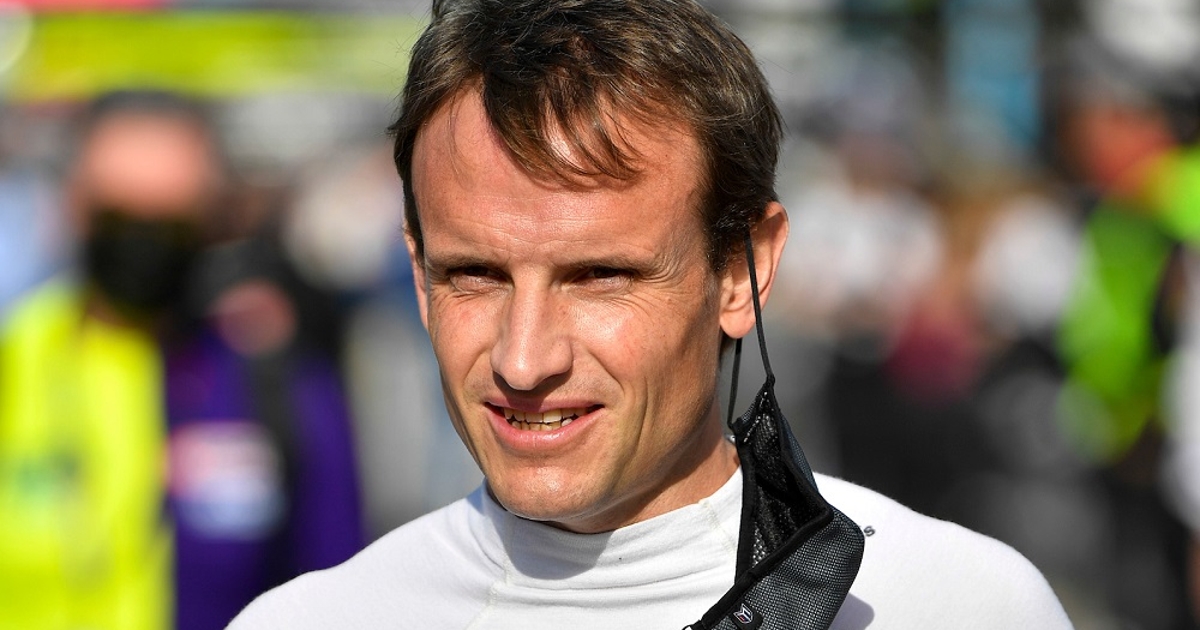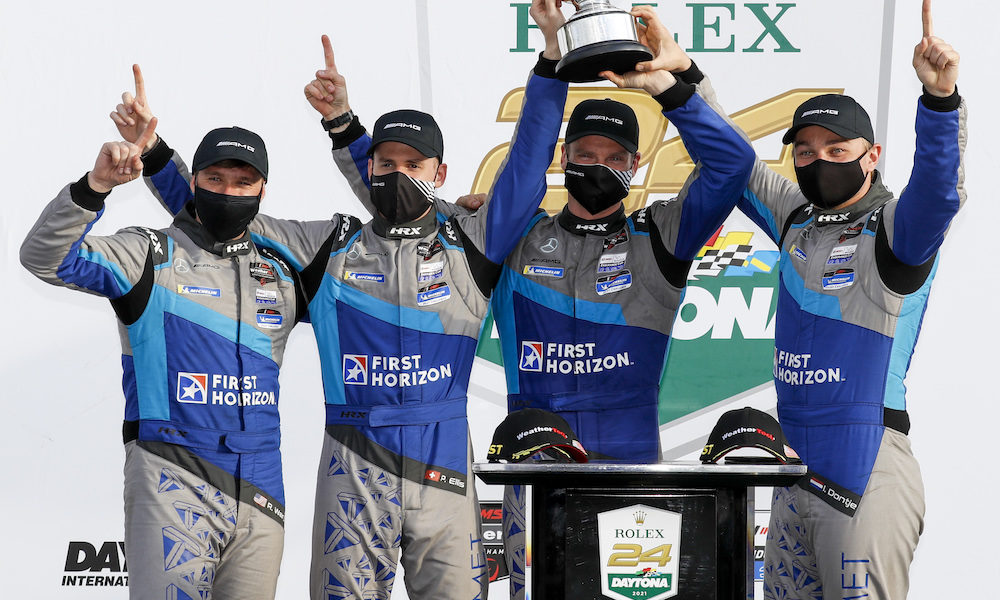Mispeedway15
Team Owner
- Joined
- May 22, 2016
- Messages
- 5,257
- Points
- 793
Wow 8 minutes left lol no way
Vettes are back in first and second.62 Ferrari leading GTLM with 21 minutes to go, that would be something.
Second isn't bad, not to mention Johnson improved tremendously.Jimmie John2on.
I'd love to see him do the endurance events.Second isn't bad, not to mention Johnson improved tremendously.
I expect him to do more races this year.
Having LMP3s left at all is a feat. I’m glad Oliver Askew and Spencer Pigot get to enjoy a win again though.How charmingly naive of me to expect more competition in the LMP2 and 3 classes than they delivered.
"I taught him everything he (Albequerque) knows!"My boy Helio!!
It must be something local. I had no problems with Spectrum for the local NBC affiliate, NBCSN, or the Spectrum app over their internet service. I’m in Columbia SC.NBC clear as can be. NBCSN still screwed up. Ridiculous.
It must be something local. I had no problems with Spectrum for the local NBC affiliate, NBCSN, or the Spectrum app over their internet service. I’m in Columbia SC.
NBCSB via Sling TV was flawless.NBC clear as can be. NBCSN still screwed up. Ridiculous.

They just live down the road and secretly test there on a nightly basis.The Taylor family absolutely own Daytona International Speedway. So cool to see this. Kobayashi just moved into second.
My last name is Taylor. Wonder if I'll get a watch too?They just live down the road and secretly test there on a nightly basis.
Exactly how I look at it. The parity is crazy. Without question, i think pit time is going to be very scrutinized after this race. Having laptimes 1/2-3/4 second slower in the name of saving fuel, may very well be worth one less pit stop in a race - or certainly less fill-time accumulated.Man, truly impressive what WTR has done. There were so many guys and teams I was rooting for this week you almost couldn't go wrong with any winner.
So happy for him.
#10 spent 51 minutes in the pits, #48 spent 56 minutes, #55 spent close to 58 minutes in pit lane. But ultimately they all wound up on level ground with the final restart with a few hours to go and that’s why it can be hard to set a strategy and stick to it. The cautions and pit procedures usually keep the field pretty close no matter what. Towards the end the Cadillacs were pitting as soon as their window opened so they could cycle to the front if a yellow came out. It’s just being adaptable and responsive is the most important thing. Races like 2018 and 2020 where there were only 4 and 6 cautions might be more conducive to that playing out but those are outliers IMO.Exactly how I look at it. The parity is crazy. Without question, i think pit time is going to be very scrutinized after this race. Having laptimes 1/2-3/4 second slower in the name of saving fuel, may very well be worth one less pit stop in a race - or certainly less fill-time accumulated.
807 laps in this weekend's race - 400-600 seconds is 6.5-10 minutes of slower laptime. I forget how much time less the TV crew said the 10 had spent on pit road.
Considering a pit stop takes 30 seconds minimum fueling time, distance from pit-in to pit-out is 3400 feet (45 MPH avg = 51 seconds), a full stop is a total of about 80 seconds.
Brake changes matter too. Which cars did 1 brake change and which, if any, did two? I know it used to be common to do them at hours 8 and 16, but I think recently some teams do one change at 14-15 whenever a caution is convenient to fall. Even doing a brake change under yellow, moves you to the back of the overall running order, so you have to work all the traffic to catch your class. Doing 1 brake change instead of two saves about 60 seconds in the box, plus untold time fighting that traffic.
I await the time when somebody gets ballsy and decides to do no brake change.
While true, track position is worth alot. Not so much those 5 less minutes overall - but if you're working fuel mileage, there is value.#10 spent 51 minutes in the pits, #48 spent 56 minutes, #55 spent close to 58 minutes in pit lane. But ultimately they all wound up on level ground with the final restart with a few hours to go and that’s why it can be hard to set a strategy and stick to it. The cautions and pit procedures usually keep the field pretty close no matter what. Towards the end the Cadillacs were pitting as soon as their window opened so they could cycle to the front if a yellow came out. It’s just being adaptable and responsive is the most important thing. Races like 2018 and 2020 where there were only 4 and 6 cautions might be more conducive to that playing out but those are outliers IMO.
Teams just do the one brake change overnight now usually unless something goes wrong.
I'm pretty sure I heard the booth crew say a brake change was mandatory, and that the stop was a mandatory 8 minutes.I await the time when somebody gets ballsy and decides to do no brake change.
It wasn’t fuel saving but pretty interesting nonetheless down the stretch when the Cadillacs were short pitting to get track position back and WTR and Mazda were running long for a final very short fill. Looking at stint and pit lengths it looks like the #60 may have been trying to save fuel after the restart and did two short stints and two short fills to the finish but they didn’t really have the competitiveness all day. On more even ground like you described it’d be interesting to see that play out.While true, track position is worth alot. Not so much those 5 less minutes overall - but if you're working fuel mileage, there is value.
Cadillac BoP, last I saw, is 75 litres of fuel capacity (30 second full fill = 2.5 Litre per second maximum flow rate)
If you only burn 60 litres over a run rather than 65, that's 2 seconds less fueling time per stop. That can get you out of pit lane ahead of the competitor. With that track position, comes other gains on-track, like traffic management.
Even when cautions fall, ect, track position is still track position. Look at how bad that last restart was for the 48 and everybody behind him - Koboyashi just didn't catch the leader's go, while the 01 did. I think that was a big part of why the 48 couldn't catch the 10 at the end. I think had the 48 had a good restart, he could have leaped the 01 into second place in the braking zones.

 sportscar365.com
sportscar365.com
You heard right, there was a mandatory 8-minute service stop but it was just for the LMP3 cars since they weren’t sure how they’d hold up in a long enduro.I'm pretty sure I heard the booth crew say a brake change was mandatory, and that the stop was a mandatory 8 minutes.
